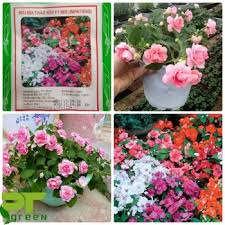# Controlling Humidity for Growing Dendrobium Orchids: A Comprehensive Guide

Dendrobium orchids are cherished for their stunning flowers and unique growth habits. However, to cultivate these beautiful plants successfully, maintaining the right humidity level is crucial. Humidity affects the overall health, growth, and blooming of Dendrobium orchids. This comprehensive guide will explore effective methods for controlling humidity in your Dendrobium orchid cultivation, ensuring they thrive in your care.
## 1. Understanding Humidity and Its Importance
### 1.1 What is Humidity?
Humidity refers to the amount of water vapor present in the air. It is typically expressed as a percentage, indicating the relative humidity (RH) in the environment. For Dendrobium orchids, maintaining optimal humidity levels is vital for their growth and flowering.
### 1.2 Importance of Humidity for Dendrobium Orchids
Dendrobium orchids, being epiphytic, naturally thrive in humid environments. The ideal humidity level for these orchids is between 50% and 70%. Here’s why humidity is essential:
– **Water Absorption**: Orchids absorb moisture through their leaves as well as their roots. High humidity facilitates this process, promoting healthy growth.
– **Photosynthesis**: Adequate humidity levels enhance photosynthesis, which is critical for plant health and flower production.
– **Preventing Pests and Diseases**: Maintaining proper humidity can help prevent fungal infections and pest infestations that thrive in excessively dry or damp conditions.
## 2. Signs of Improper Humidity Levels
### 2.1 Symptoms of Low Humidity
When the humidity is too low (below 40%), Dendrobium orchids may exhibit several issues:
– **Brown Leaf Tips**: Dry, brown tips on leaves are a common sign of low humidity.
– **Wilting Flowers**: Flowers may wilt or drop prematurely due to insufficient moisture.
– **Poor Growth**: Stunted growth and reduced flowering can occur when humidity levels are not ideal.
### 2.2 Symptoms of High Humidity
Conversely, excessive humidity (above 70%) can lead to other problems:
– **Fungal Issues**: High humidity creates a breeding ground for fungi, leading to root rot and other diseases.
– **Mold Growth**: Mold can develop on the potting medium or the leaves, indicating excessively damp conditions.
– **Pest Infestations**: Pests such as mealybugs and spider mites may thrive in overly humid environments.
## 3. Measuring Humidity Levels
### 3.1 Tools for Measuring Humidity
To effectively control humidity, it is essential to monitor the levels regularly. Consider using the following tools:
– **Hygrometers**: A hygrometer is a device specifically designed to measure humidity levels. Digital hygrometers are user-friendly and provide accurate readings.
– **Weather Stations**: Many modern weather stations come equipped with humidity sensors and can monitor indoor and outdoor conditions.
### 3.2 Understanding Readings
– **Ideal Range**: Aim to maintain humidity levels between 50% and 70% for optimal growth and blooming of Dendrobium orchids.
– **Daily Monitoring**: Regularly check humidity levels, especially during seasonal changes when humidity can fluctuate.
## 4. Methods for Controlling Humidity
### 4.1 Using Humidifiers
**Humidifiers** are effective tools for maintaining proper humidity levels indoors.
– **Types of Humidifiers**: Consider using cool mist or ultrasonic humidifiers. These devices release moisture into the air, helping to maintain a consistent humidity level.
– **Placement**: Position the humidifier near your Dendrobium orchids, but avoid placing it directly on them to prevent excess moisture on the leaves.
– **Regular Maintenance**: Clean your humidifier regularly to prevent mold and bacteria growth.
### 4.2 Creating a Humidity Tray
A **humidity tray** is a simple and effective way to increase humidity around your orchids.
– **Materials Needed**: You will need a shallow tray, pebbles, and water.
– **Instructions**:
1. Fill the tray with pebbles.
2. Add water until it reaches just below the top of the pebbles.
3. Place your Dendrobium orchids on top of the pebbles, ensuring that the pots are not submerged in water.
– **How It Works**: As the water evaporates, it increases the humidity around the orchids.
### 4.3 Misting
Misting is a direct way to increase humidity around your Dendrobium orchids.
– **Frequency**: Mist your orchids 1-2 times a day, especially during dry seasons. In high humidity, mist less frequently to avoid over-saturation.
– **Best Time to Mist**: Misting in the morning allows the leaves to dry out during the day, reducing the risk of fungal infections.
### 4.4 Grouping Plants
Grouping Dendrobium orchids with other plants can help create a more humid microclimate.
– **Benefits**: The moisture released from one plant can benefit others nearby. This is particularly effective when growing orchids indoors.
– **Considerations**: Ensure that the plants are compatible in terms of light and water requirements.
### 4.5 Using Sphagnum Moss
Sphagnum moss can help maintain humidity around your Dendrobium orchids.
– **How to Use**: Place damp sphagnum moss around the base of the orchid pot or on the humidity tray. As the moss dries, it releases moisture into the air.
– **Benefits**: This method provides a slow and steady increase in humidity.
## 5. Environmental Factors Affecting Humidity
### 5.1 Temperature
Temperature plays a significant role in humidity levels.
– **Warm Air Holds More Moisture**: Warm air can hold more moisture than cool air, so in winter, when temperatures drop, humidity may also decrease.
– **Heating Systems**: Central heating can dry out indoor air. Use a humidifier or place trays of water near heat sources to combat this.
### 5.2 Ventilation
Good air circulation is essential for maintaining healthy humidity levels.
– **Balanced Airflow**: Ensure that your growing area has adequate airflow to prevent stagnant, humid conditions that can lead to fungal diseases.
– **Using Fans**: Small oscillating fans can help improve air circulation without creating drafts directly on the orchids.
### 5.3 Seasonal Changes
Be aware of how seasons affect humidity levels.
– **Summer**: Humidity tends to be higher, but air conditioning can dry the air out. Monitor levels and adjust accordingly.
– **Winter**: Cold weather can significantly reduce indoor humidity. Use humidifiers or other methods mentioned above to maintain proper levels.
## 6. Troubleshooting Humidity Issues
### 6.1 Low Humidity Troubleshooting
If your orchids are suffering from low humidity:
– **Increase Misting**: Misting more frequently can help raise humidity levels temporarily.
– **Add a Humidifier**: If you don’t have one, consider purchasing a humidifier to maintain consistent humidity levels.
– **Monitor Potting Medium**: Ensure that the potting medium is not too dry, as this can contribute to low humidity around the plant.
### 6.2 High Humidity Troubleshooting
For issues related to high humidity:
– **Improve Air Circulation**: Increase airflow around your orchids by using fans or adjusting the arrangement of your plants.
– **Reduce Misting**: Cut back on misting frequency to prevent excess moisture.
– **Check for Pests**: High humidity can lead to pest infestations. Regularly inspect your orchids for signs of pests and take action immediately if needed.
## 7. Conclusion
Controlling humidity is vital for the successful growth of Dendrobium orchids. By understanding the importance of humidity, monitoring levels regularly, and employing various methods to maintain optimal humidity, you can ensure the health and beauty of your orchids. Whether you use humidifiers, humidity trays, misting, or grouping plants, adapting your approach to the specific needs of your Dendrobium orchids will yield the best results. With diligent care, your orchids will thrive, producing stunning blooms that enhance any indoor or outdoor space. Cultivating Dendrobium orchids can be a rewarding experience, and by mastering humidity control, you’ll be well on your way to becoming a successful orchid grower.

